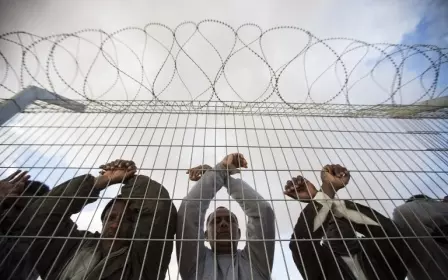Israeli soldiers fired on migrants at Egyptian border: Report

Israeli soldiers acted “unjustifiably” when they fired on a group of migrants at the country’s border with Egypt last month, military sources have said.
As part of a military investigation into the August shooting, Southern Command chief Sami Turgeman has said soldiers acted “against the rules of engagement” when they opened fire in early August, Israeli daily Haaretz reports.
Investigators are seeking to determine whether criminal charges should be brought against soldiers who fired on a group of 15 Sudanese asylum seekers, wounding three and leaving one hospitalised in serious condition.
After the shooting those who were not hospitalised were taken to Saharonim, a controversial detention centre in the desert where migrants can by law be detained indefinitely.
Initial army statements surrounding the incident said that the migrants were taken to hospital after they were injured by the 395-kilometre barbed-wire fence that separates Israel from Egypt on its western border.
A later statement claimed that the men were injured by Egyptian fire.
Finally an investigation at the site found that Israeli soldiers shot at the group after one of them, who was armed, opened fire.
An officer in the 80th territorial division, which is active in the border region, told investigators that the armed man had opened fire at Egyptian policemen who had noticed the group and attempted to stop them crossing into Israeli territory.
Following an investigation, the military said in a statement that the armed man had not attempted to cross the border after accompanying the migrants to the frontier, and was not injured by the gunfire.
Middle East Eye propose une couverture et une analyse indépendantes et incomparables du Moyen-Orient, de l’Afrique du Nord et d’autres régions du monde. Pour en savoir plus sur la reprise de ce contenu et les frais qui s’appliquent, veuillez remplir ce formulaire [en anglais]. Pour en savoir plus sur MEE, cliquez ici [en anglais].




